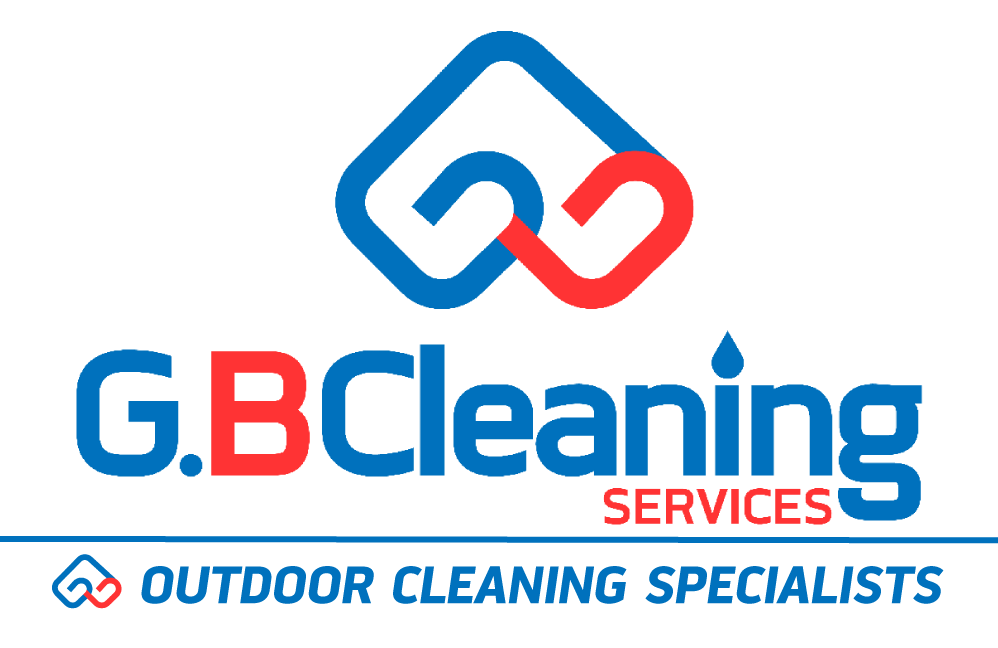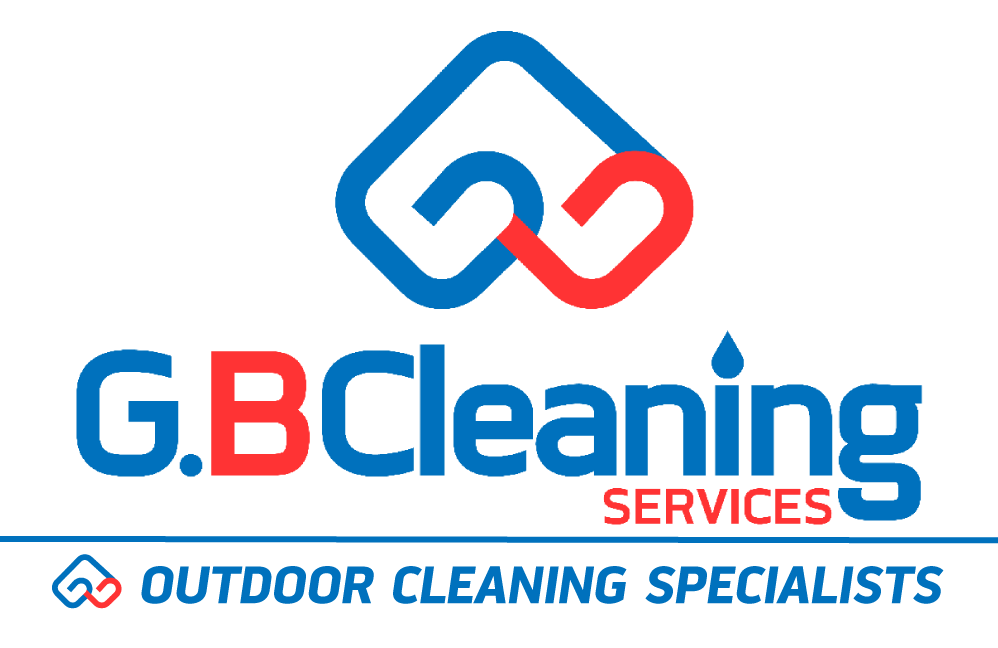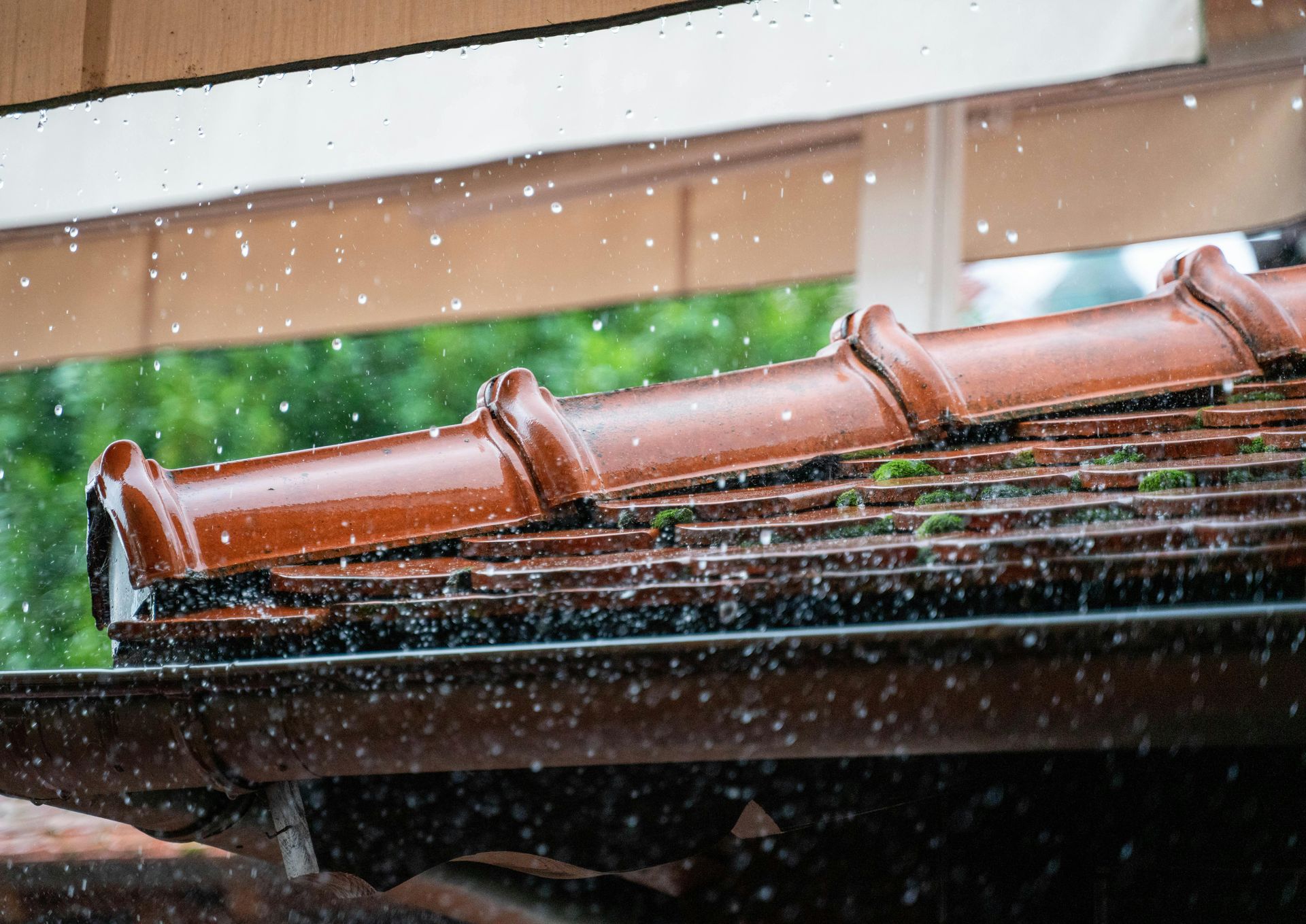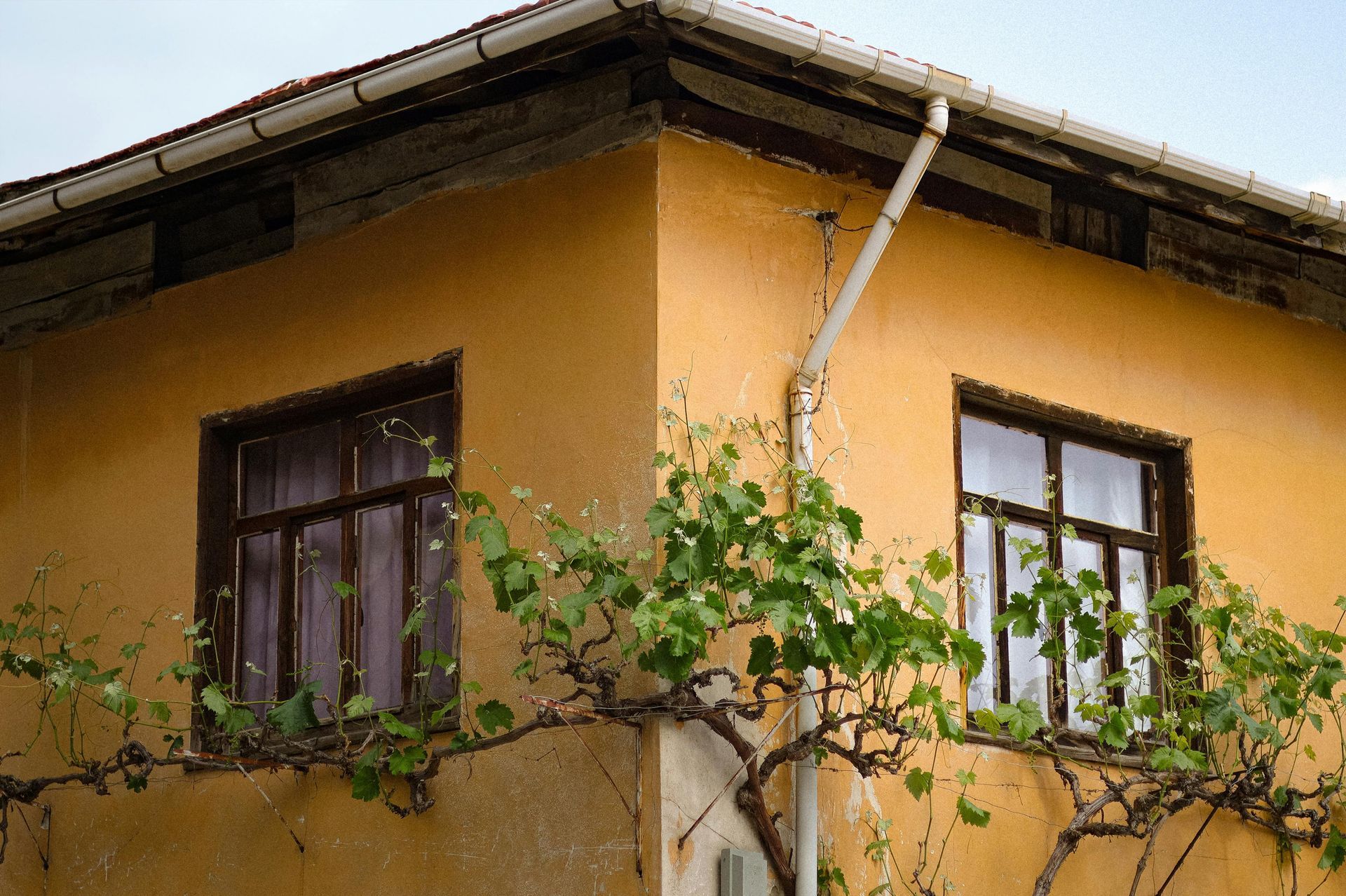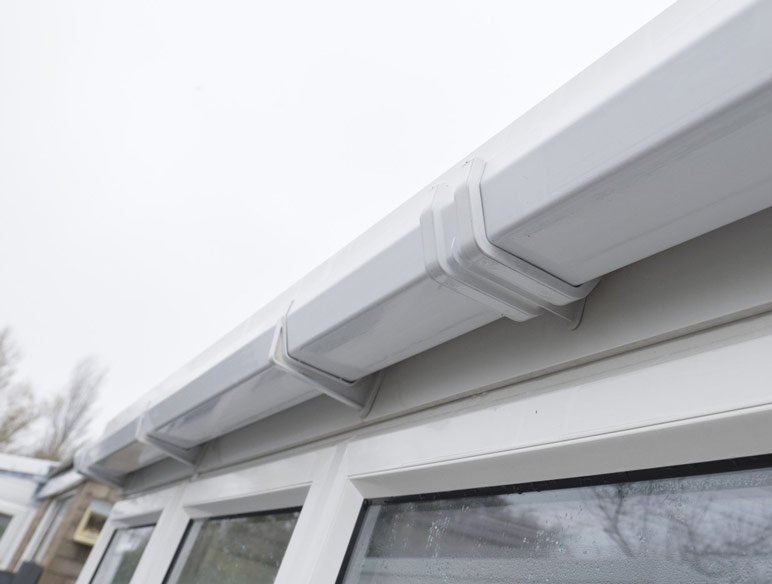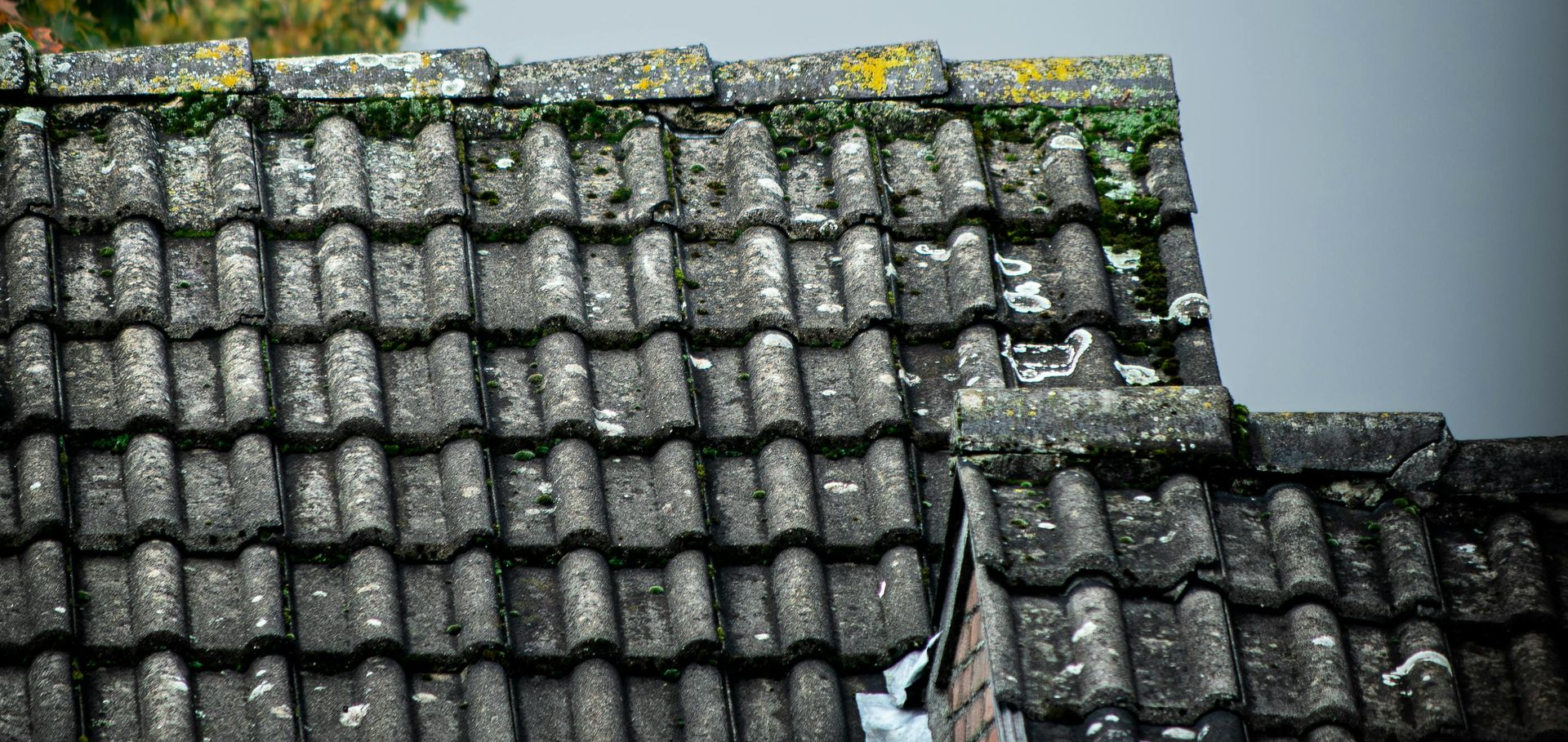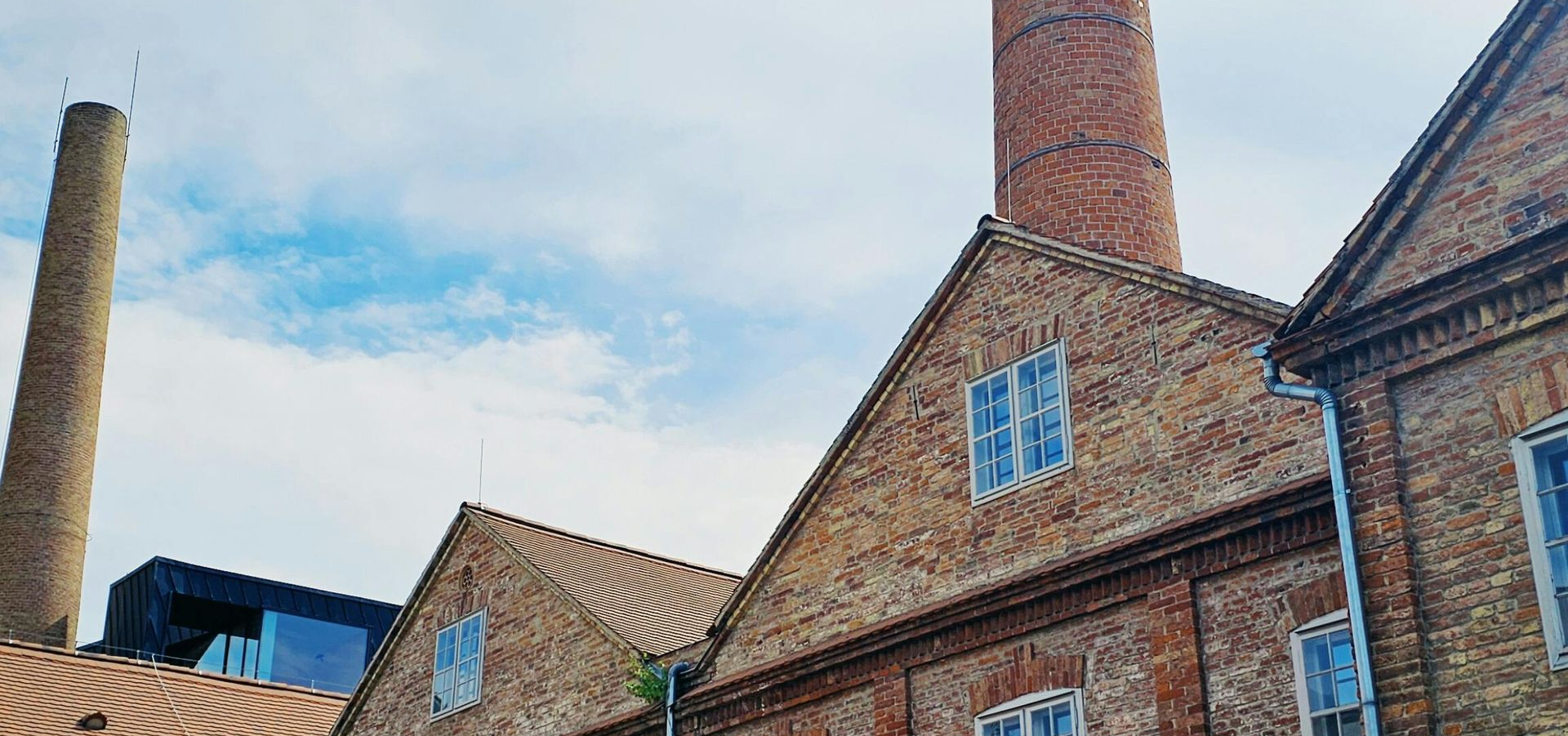How to Clean Asbestos and Cement Roofs: A Practical Guide
Cleaning asbestos cement roofing presents a unique challenge that demands careful approach and proper understanding. Whilst these roofs remain common across thousands of UK properties. particularly on garages, warehouses, and agricultural buildings, their maintenance requires methods fundamentally different from ordinary roofing materials. The wrong approach doesn't just risk damaging your roof; it can release hazardous fibres and create serious health consequences.
Understanding What You're Working With
Before discussing cleaning methods, understanding the material itself proves essential. Asbestos cement typically contains 10-15% asbestos fibres, usually white asbestos (chrysotile), though older installations may contain brown (amosite) or blue (crocidolite) varieties. The cement matrix binds these fibres, creating a relatively stable material when intact and in good condition.
The key phrase is "when intact." Asbestos cement's danger increases dramatically when the material degrades. Weathering from UV exposure, frost cycles, and biological growth gradually breaks down the cement binder. This process makes the surface more friable, meaning fibres can release more easily when disturbed. A roof that was relatively safe to maintain gently five years ago may require completely different handling today if degradation has progressed significantly.
Age provides a rough indicator of likely condition, but visual assessment matters more. Asbestos cement showing chalky white surfaces, extensive cracking, flaking, or areas where the original grey colour has weathered to pale white demands extreme caution. These signs indicate advanced cement breakdown, and cleaning such surfaces may do more harm than good. In these cases, encapsulation or replacement becomes the more prudent choice.
The Critical Principle: Keep It Wet
Every safe asbestos cement cleaning method revolves around a single fundamental principle: maintaining constant moisture throughout the process. Water acts as a suppressant, preventing fibres from becoming airborne if any are released during cleaning. This principle applies regardless of which specific cleaning method you employ.
The instinct to blast away moss and grime with high-pressure equipment must be firmly resisted. High-pressure washing, particularly narrow-angle jets delivering concentrated streams, can destroy the cement surface, releasing substantial quantities of fibres into the air. The UK government explicitly warns against using high-pressure jets on asbestos cement due to unpredictable contamination risks.
Understanding pressure ratings helps clarify this distinction. High-pressure washers typically operate at 2,000-4,000 PSI. These pressures can literally erode concrete given time, and asbestos cement, particularly weathered material, offers far less resistance. By contrast, low-pressure application means pressures comparable to a garden hose, typically under 100 PSI. The difference isn't subtle; it's the distinction between aggressive erosion and gentle wetting.
Some confusion arises around specialised equipment like enclosed pressure washing systems. These devices, approved by the HSE, use contained washing units similar to oversized patio cleaner attachments. The enclosed boxes contain water runoff and prevent fibre dispersal whilst operating at 3,000-6,000 PSI within the sealed unit. However, these systems demand specialist training, proper waste collection, and filtration of all contaminated water. They're professional tools, not DIY solutions, and even with proper equipment, they carry risks of water ingress and gutter overflow due to the water volumes involved.
The Biocide Treatment Method
The safest and most widely recommended approach for asbestos cement roof cleaning centres on biocidal treatment rather than mechanical action. This method works with biological and chemical processes rather than against the material's fragile nature.
Biocides are specialised chemical treatments designed to kill biological organisms, moss, algae, lichen, and fungi, that colonise roof surfaces. Unlike bleach or general cleaning products, proper roof biocides are formulated specifically for this application, approved by the Health and Safety Executive, and designed to work over extended periods rather than delivering immediate results.
Commercial biocide products commonly used for asbestos roofs include those based on DDAC (Didecyldimethylammonium chloride), typically at 50% concentration before dilution. Products like Bio-Wash Roof Cleaner, Benz Bio Cleanze, and similar HSE-licensed formulations penetrate biological growth, disrupting cellular structures and causing organisms to die and loosen their grip on the substrate.
The treatment timeline differs markedly from instant-gratification cleaning methods. After application, biocides require dwell time, often 7-14 days, to fully act. During this period, the treatment continues working, killing organisms and undermining their structural adhesion to the roof surface. This patience delivers results that mechanical methods struggle to achieve whilst minimising physical disturbance to the asbestos cement surface.
Following the dwell period, dead biological material can be removed much more easily and safely. The organisms have lost their grip, and gentle washing or soft brushing removes them without the aggressive mechanical action that would be necessary to dislodge living, firmly-attached growth.
Step-by-Step Cleaning Process
Proper asbestos cement roof cleaning follows a systematic process prioritising safety and effectiveness over speed.
- Pre-cleaning assessment determines whether cleaning is appropriate. Inspect the roof from ground level using binoculars if necessary. Look for signs of severe degradation: extensive cracking, chalky surfaces, visible fibre exposure, or structural damage. If these conditions exist, cleaning may not be advisable, and professional assessment becomes essential before proceeding.
- Access planning recognises that asbestos cement roofs are inherently fragile and cannot safely bear weight. Never walk directly on these roofs. Proper access requires scaffolding, mobile elevated work platforms, or specialist crawling boards that distribute weight if direct roof access proves unavoidable. Many cleaning operations can be conducted from ground level or from ladders positioned to avoid roof contact, using extension poles for application equipment.
- Area preparation involves covering sensitive areas below the work zone. Garden plants should be covered or dampened to protect them from biocide contact. Whilst modern biocides are generally biodegradable and environmentally responsible when properly diluted, protecting delicate vegetation represents prudent practice. Inform neighbours if your property sits close to boundaries, as spray drift, whilst minimal with proper low-pressure application—remains a consideration.
- Personal protective equipment forms an essential component even when the work involves minimal material disturbance. At minimum, wear disposable overalls, gloves, and FFP3-rated respiratory protection. Standard dust masks prove insufficient; only masks specifically rated FFP3 provide adequate filtration for asbestos fibres. Safety glasses or face shields protect eyes from chemical splashes. Remember that disposable PPE should be treated as contaminated waste and disposed of properly after use.
- Initial dampening thoroughly wets the roof surface before any work begins. Use a garden hose with a rose attachment or gentle spray nozzle, never a concentrated jet. The goal is saturation without force. This step suppresses any loose dust or debris and creates the consistently wet environment essential for safe working.
- Biocide application follows manufacturer's instructions for dilution and coverage rates. Most professional-grade biocides dilute at ratios between 1:3 and 1:5 depending on contamination severity. Products like Bio-Wash diluted at 1:5 cover approximately 125 square metres from a 5-litre concentrate, making them economical despite premium pricing. Application equipment should deliver low-pressure spray. Backpack sprayers with adjustable nozzles work well for smaller roofs, whilst larger properties might benefit from pump sprayers or equipment specifically designed for roof application. Water-fed poles with spray attachments allow application from ground level, eliminating the need for roof access entirely in many cases. Apply biocide evenly across all affected areas. Don't be stingy—proper coverage ensures effectiveness. The recommended approach often involves applying biocide from ground level using extendable poles, which proves both cost-effective and safe, letting natural processes complete the cleaning over time.
- Dwell time requires patience. After application, wait 7-14 days before attempting any physical cleaning. During this period, the biocide works through biological layers, killing organisms and loosening their attachment. Weather impacts effectiveness, biocides work faster in warm, humid conditions and slower during cold, dry periods. Some products, like sodium hypochlorite alternatives, deliver faster initial results but lack the lasting protective effect of DDAC-based biocides.
- Gentle removal follows the dwell period. Using low-pressure water from a garden hose and soft-bristled brushes (never wire brushes, which damage surfaces), gently remove dead biological material. The emphasis must remain on "gentle", if material resists removal despite proper biocide treatment, it's better to leave it than force removal and risk surface damage. As government guidance states: "If any lichen or moss roots prove difficult to remove, it is better to leave them to avoid damaging the roof."
- Waste management recognises that removed biological material and rinse water are potentially contaminated. Whilst not classified as asbestos waste in most cleaning scenarios, provided the roof surface hasn't been damaged, prudent practice involves containing and filtering waste water where practical. Some professional operators collect and filter all runoff, disposing of collected slurry as contaminated waste. For smaller-scale work where this proves impractical, ensuring dilution through ample water use minimises contamination risk.
What Not to Do
Understanding prohibited practices prevents dangerous mistakes that even well-intentioned property owners might consider.
- Never use high-pressure washing with concentrated jets. This cannot be emphasised enough. The immediate visible results might seem appealing, but the unseen fibre release creates hazards far outweighing any cleaning benefit. Professional enclosed pressure washing systems exist, but these remain specialist tools requiring specific training and equipment.
- Never dry brush or scrape asbestos cement. Mechanical action on dry surfaces represents one of the highest-risk activities for fibre release. Even soft brushing must only occur on thoroughly wet surfaces after proper biocidal treatment has loosened contamination.
- Never use power tools on asbestos cement surfaces. Grinders, sanders, wire brushes, or any powered abrasive equipment will release substantial quantities of fibres. The fleeting time saved cannot justify the health risks created.
- Never walk on the roof unless absolutely essential and proper load distribution equipment is employed. Asbestos cement roofs, particularly older ones, are fragile and prone to sudden failure under point loads. Beyond the obvious fall risk, breaking through the roof releases fibres and creates damage requiring repair or replacement.
- Never use chemical products not specifically designed for roofs. Some cleaning chemicals can react with cement, accelerating degradation. Others may be too acidic or alkaline, causing surface damage rather than cleaning it. Stick to products specifically formulated and approved for roof cleaning applications.
The Alternative: Soft Washing Systems
Professional roof cleaning services increasingly employ soft washing systems that combine low-pressure application with specifically formulated cleaning chemicals. This approach represents evolution of the biocide method, optimising both equipment and chemistry for maximum effectiveness with minimal risk.
Soft washing equipment typically delivers 100-200 PSI, dramatically less than high-pressure systems but more than ordinary garden hoses. This intermediate pressure, combined with appropriate nozzles, achieves adequate coverage without surface damage. The lower pressure actually enhances safety by reducing splashing and drift that might occur with either very low pressure (large droplets) or high pressure (fine mist).
The chemistry employed in soft washing often combines biocides with surfactants that improve penetration and coverage. These systems don't rely on pressure to clean; instead, chemical action does the work whilst gentle rinsing removes loosened contamination. Results typically manifest over days to weeks rather than immediately, but the cleaning proves more thorough and longer-lasting than mechanical methods.
Professional soft washing for asbestos roofs generally costs more than cleaning ordinary roofs, typically £50+ per square metre versus £10-15 per square metre for standard roof cleaning. This premium reflects the additional training, insurance, safety equipment, and liability associated with asbestos work. However, the investment often proves worthwhile compared to the risks and potential costs of improper DIY approaches.
Frequency and Ongoing Maintenance
Establishing appropriate cleaning intervals prevents biological growth from becoming so established that removal becomes problematic. The ideal frequency depends on several factors: roof orientation and shading, local climate, tree coverage, and the roof's age and condition.
Generally, asbestos cement roofs in good condition benefit from biocidal treatment every 2-3 years. Roofs in shaded areas or under tree canopies may require more frequent attention, potentially annually, as biological growth thrives in these conditions. Conversely, roofs with full sun exposure in areas with dry climates might extend intervals to 3-4 years.
Regular visual inspections, ideally annually, help identify developing issues before they become serious. Look for increasing biological growth, signs of water ingress, damaged fixings, or areas where weathering appears to be accelerating. Early intervention proves both easier and safer than addressing advanced problems.
Modern biocides offer residual protection extending beyond the initial cleaning. Quality products continue preventing regrowth for 12-18 months after application, meaning roofs stay cleaner longer and subsequent cleaning becomes easier. This residual effect represents significant value, as it reduces the frequency of interventions required.
When to Choose Professional Services
Certain situations clearly indicate professional intervention rather than DIY attempts. If your roof shows significant degradation. extensive cracking, powdery surfaces, or visible damage, professional assessment becomes essential before any cleaning. The roof might require encapsulation, coating, or replacement rather than cleaning.
Large roofs or complex configurations with multiple levels, valleys, or difficult access points exceed most property owners' capabilities and equipment. The access equipment alone, scaffolding or mobile platforms, represents substantial investment and requires competent use.
If you're uncertain about the roof's condition, lack appropriate equipment, or feel uncomfortable with the process, professional services provide peace of mind alongside results. The cost, whilst higher than DIY, includes insurance coverage, proper training, appropriate equipment, and, critically, assumption of liability should problems arise.
Professional roof cleaning services specialising in asbestos work carry appropriate insurance specifically covering asbestos-related risks. Standard household insurance and even professional indemnity policies frequently exclude asbestos work, meaning DIY approaches might leave you personally liable for any problems resulting from improper handling.
Understanding the Limitations
Cleaning represents only one option within the spectrum of asbestos cement roof management. Recognising when cleaning proves inadequate or inappropriate prevents wasted effort and potential harm.
Roofs with extensive damage, multiple cracks, large areas of surface deterioration, or structural issues, often benefit more from encapsulation than cleaning. Modern liquid-applied encapsulation systems seal surfaces, prevent further deterioration, and eliminate fibre release risk whilst extending roof life by 10-15 years. Encapsulation typically costs around £33 per square metre, more expensive than cleaning but potentially more appropriate for deteriorated roofs.
Over-cladding systems install new roofing over existing asbestos cement, isolating it without removal. This approach eliminates exposure risk, improves thermal performance, and provides a modern weatherproof roof. Whilst requiring structural assessment to ensure the building can support additional load, over-cladding proves increasingly popular for commercial and industrial properties.
Complete removal and replacement remains the only permanent solution but involves substantial cost and disruption. For roofs approaching end of serviceable life or buildings undergoing significant renovation, removal may prove the most logical choice despite higher immediate costs.
Safety Remains Paramount
Throughout any work involving asbestos cement, safety considerations must dominate decision-making. The materials involved can cause fatal diseases decades after exposure, making "good enough" approaches fundamentally unacceptable.
If in doubt about any aspect, material identification, appropriate methods, required equipment, or safe working practices, seek professional guidance. The HSE provides extensive free resources, including specific guidance sheets for asbestos cement work. These documents outline requirements for various activities and provide the information needed for informed decisions.
Training matters even for apparently simple work. Asbestos awareness training costs £20-50 per person for basic online courses and provides essential knowledge about risks, identification, and safe working practices. For anyone regularly working around asbestos materials, Category B non-licensed work training proves worthwhile despite higher costs of £100-200. This training covers practical techniques, safety protocols, and legal requirements in sufficient depth for confident, compliant work.
Medical surveillance isn't legally required for occasional, low-level asbestos cement work, but property owners with significant asbestos exposure history should discuss screening options with their GP. Early detection of asbestos-related disease, whilst not offering cure, allows for better management and monitoring.
Conclusion: Patience and Prudence
Cleaning asbestos cement roofing successfully demands patience, appropriate products, and disciplined adherence to safe working practices. The modern biocide-based approach represents a fundamental shift from historical mechanical cleaning methods, prioritising long-term results and safety over immediate gratification.
The investment of time, allowing biocides to work properly, and modest financial outlay for proper products proves minor compared to the risks and costs associated with improper methods. A roof that takes two weeks to clean properly using biocidal treatment costs far less and presents dramatically lower risks than one "cleaned" in an afternoon with high-pressure equipment that damages surfaces and releases fibres.
For property owners managing buildings with asbestos cement roofing, developing a relationship with qualified contractors who understand these materials' specific requirements provides long-term value. Regular professional inspection and maintenance prevents problems from developing whilst ensuring work complies with evolving regulations and best practices.
The ultimate goal extends beyond mere appearance. Properly maintained asbestos cement roofing in good condition presents minimal risk whilst continuing to provide weather protection for years or even decades. Achieving this outcome requires respecting the material's nature, understanding appropriate techniques, and prioritising safety over speed or economy. These principles, whilst demanding more thought and patience than conventional roof cleaning, deliver results that protect both the roof and everyone exposed to it.
